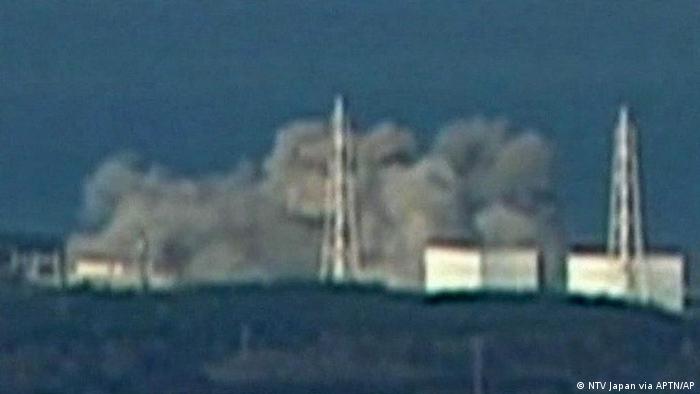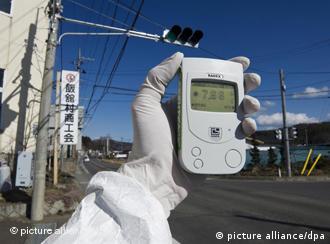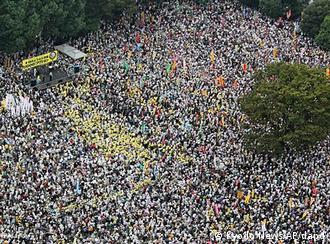
Workers in one village in the evacuation zone around the stricken Fukushima power plant have started clocking in again. They carry personal Geiger counters to make sure their radiation levels do not exceed the limit.
Iitate is like a ghost town. The village lies within the emergency evacuation zone, as it is only 40 kilometers away from the Fukushima 1 nuclear power plant that was damaged by the earthquake and tsunami that struck Japan on March 11 last year. The houses are empty and the town deserted, with many of its former inhabitants still living in temporary shelters, mostly in Fukushima City.
But there is life in one part of the village - at the local Kikuchi factory, where parts for mobile phones, cameras and photocopiers are made. Some 240 workers come here every morning to work.
Kikuchi received permission to continue producing in Iitate under strict conditions. Hiromi Sato, the factory's deputy head, is pleased about this, even if he now has a longer commute.
“There was some uncertainty among the people but we were able to give them stable employment. This is very important in times such as these,” he says, adding there have been no production losses.

Radiation levels have decreased in Iitate but are still high
Health measures
He explains that the factory has taken a series of measures to dispel some of the employees' fears and address health issues, such as installing an air shower at the entrance to minimize contamination.
The halls have also been sealed off and special air conditioning units are used to ensure no radioactive particles can penetrate the building.
Each worker has been given a Geiger counter to record daily personal radiation levels. If measurements surpass 20 millisieverts per year, the employee is sent to another factory in Nihonmatsu. This has already happened to five people. So far, Hiromi Sato's counter is at 8 millisieverts.
“It will be set to zero on March 11. The levels are calculated anew every year,” says Sato.
But this means that the 20 millisieverts limit can be exceeded significantly over a number of years. The government has not imposed any regulations regarding the products made by Kikuchi but the company has negotiated limits with its customers.

The anti-nuclear movement is growing in Japan
“The products were not the problem, but the storage area was,” says Sato. “We used to use wooden pallets, but they absorb a lot of radioactive particles. Now we've switched to using plastic pallets.”
The radiation levels within the factory area are now only 0.3 microsieverts per hour, which is equivalent to levels just north of Tokyo.
Outside, the levels are higher but they have also decreased considerably, according to Sato, “thanks to a state decontamination project in December and January that removed and replaced the asphalt.”
“Five centimeters of topsoil were also removed. Before there were two to three microsieverts per hour in the air but it's gone down to 0.7.”
Nonetheless, he says, it's still not the best place to go for a walk.
Author: Peter Kujath, Iitate / act
Editor: Sarah Berning
沒有留言:
張貼留言